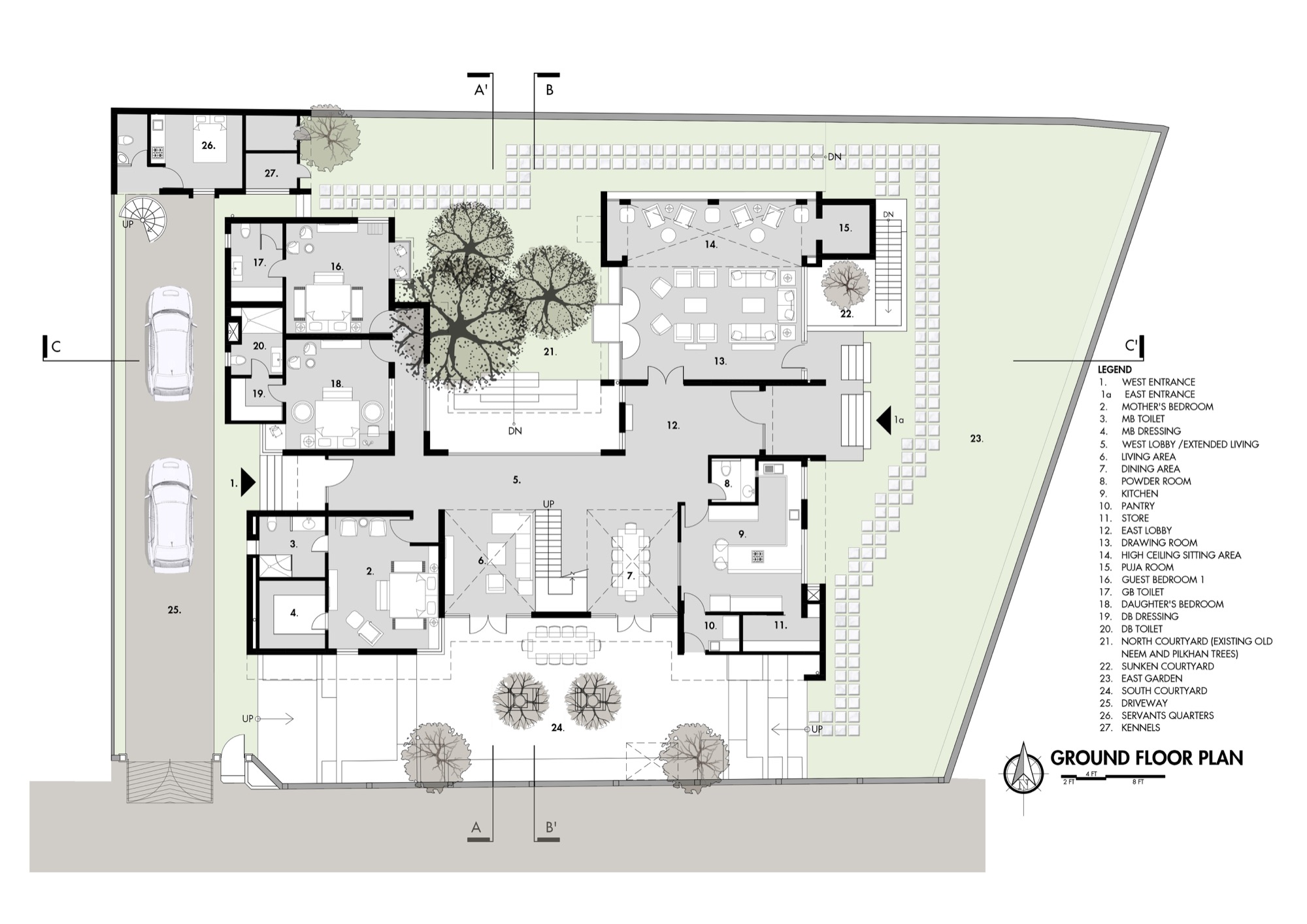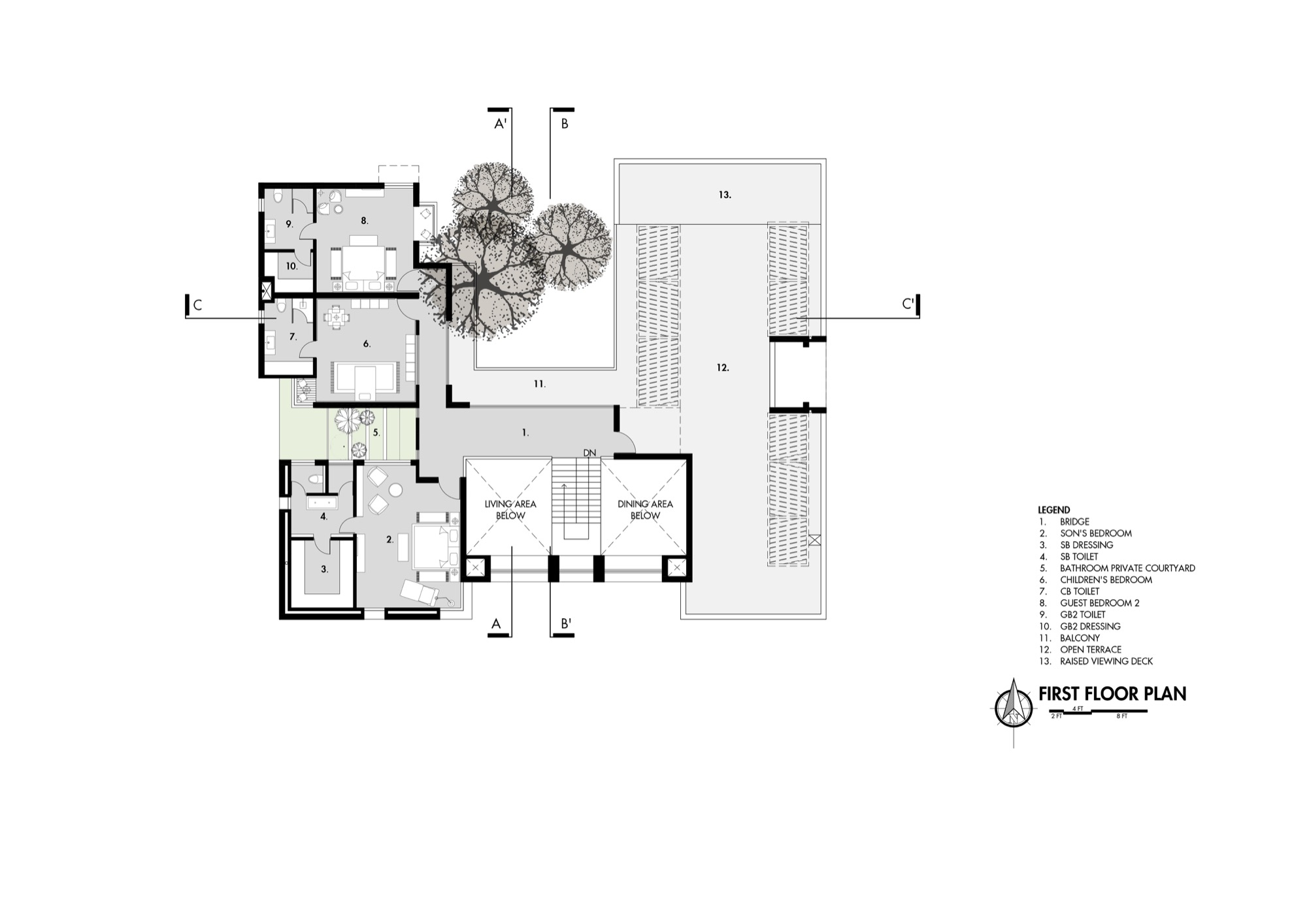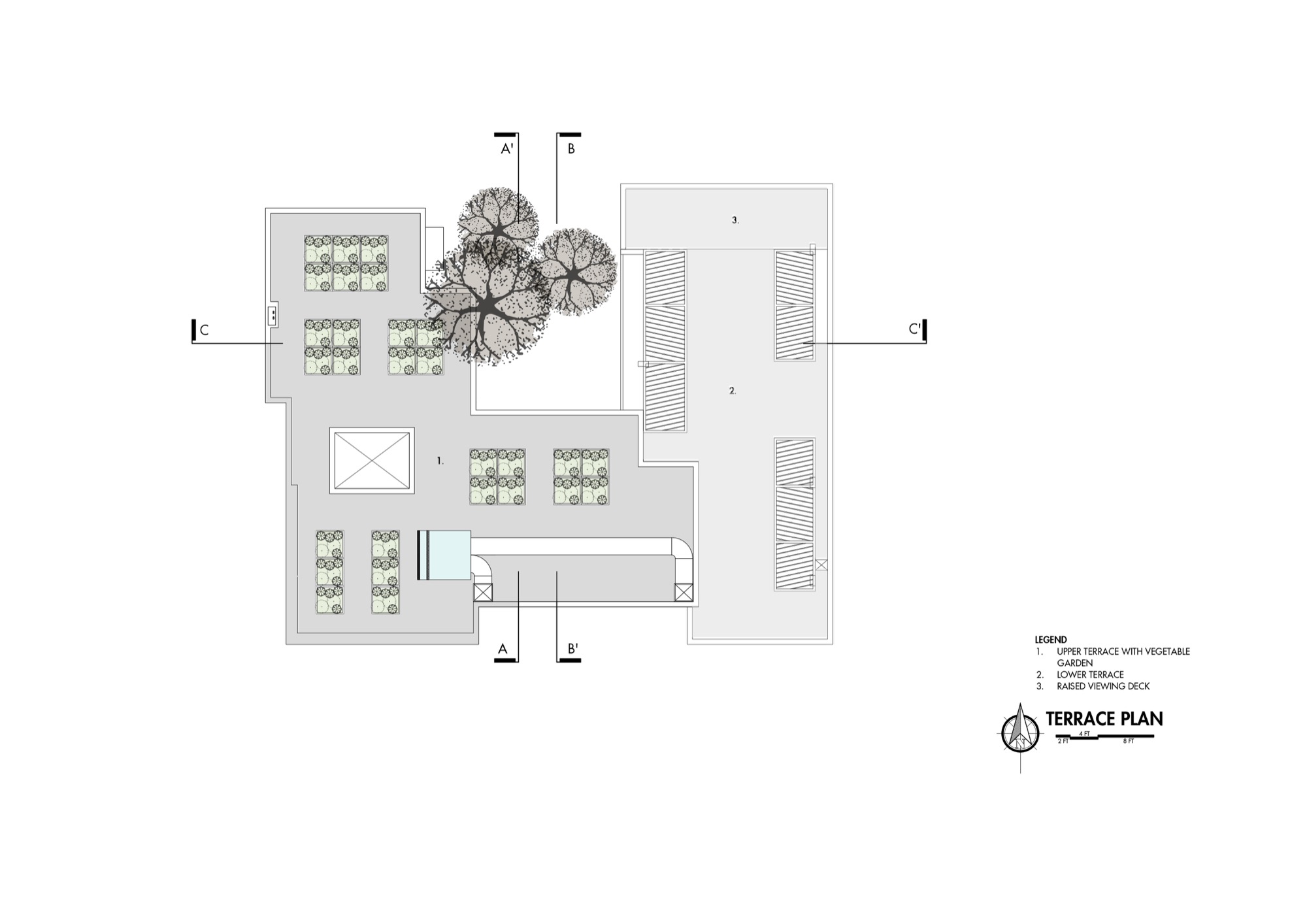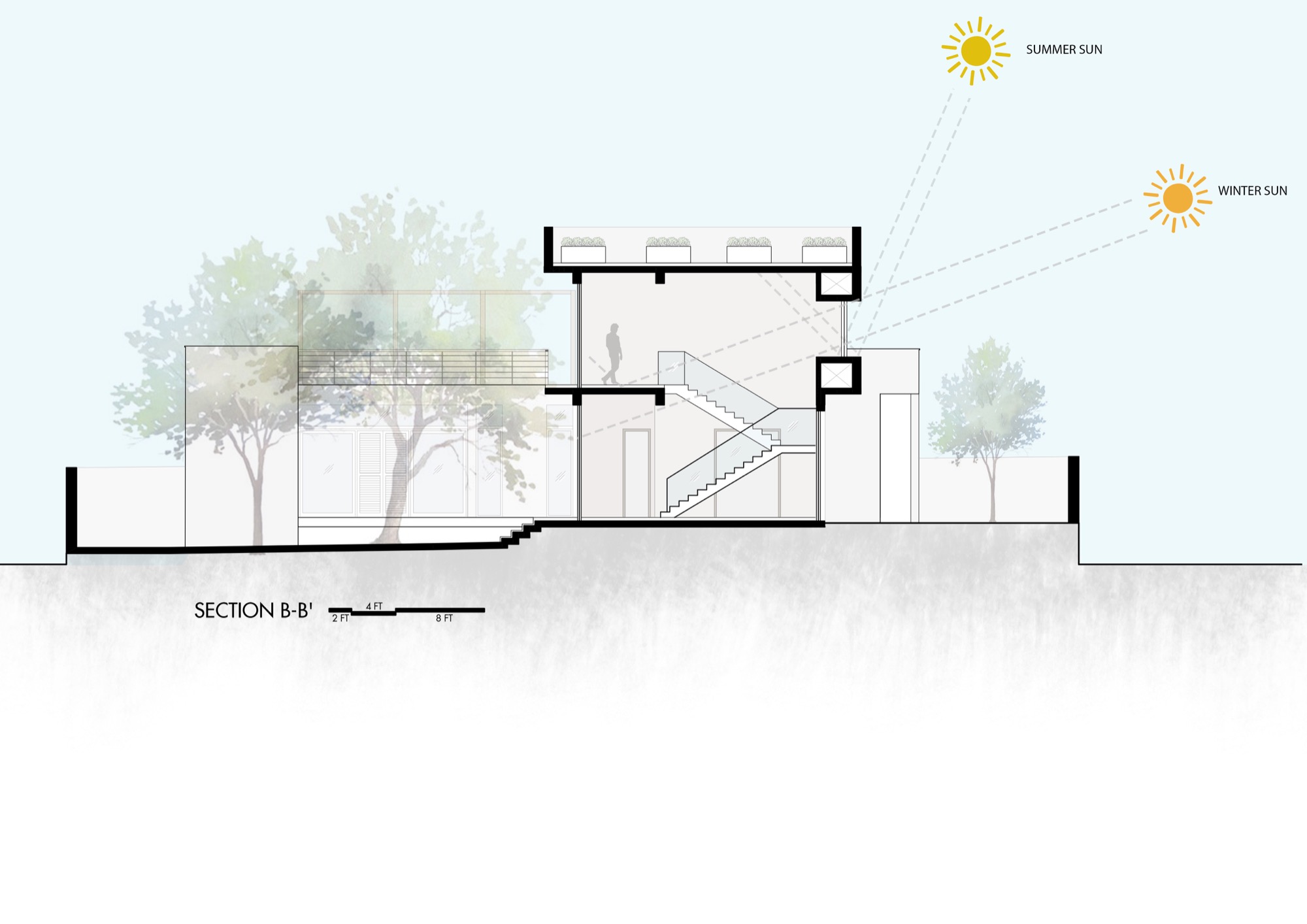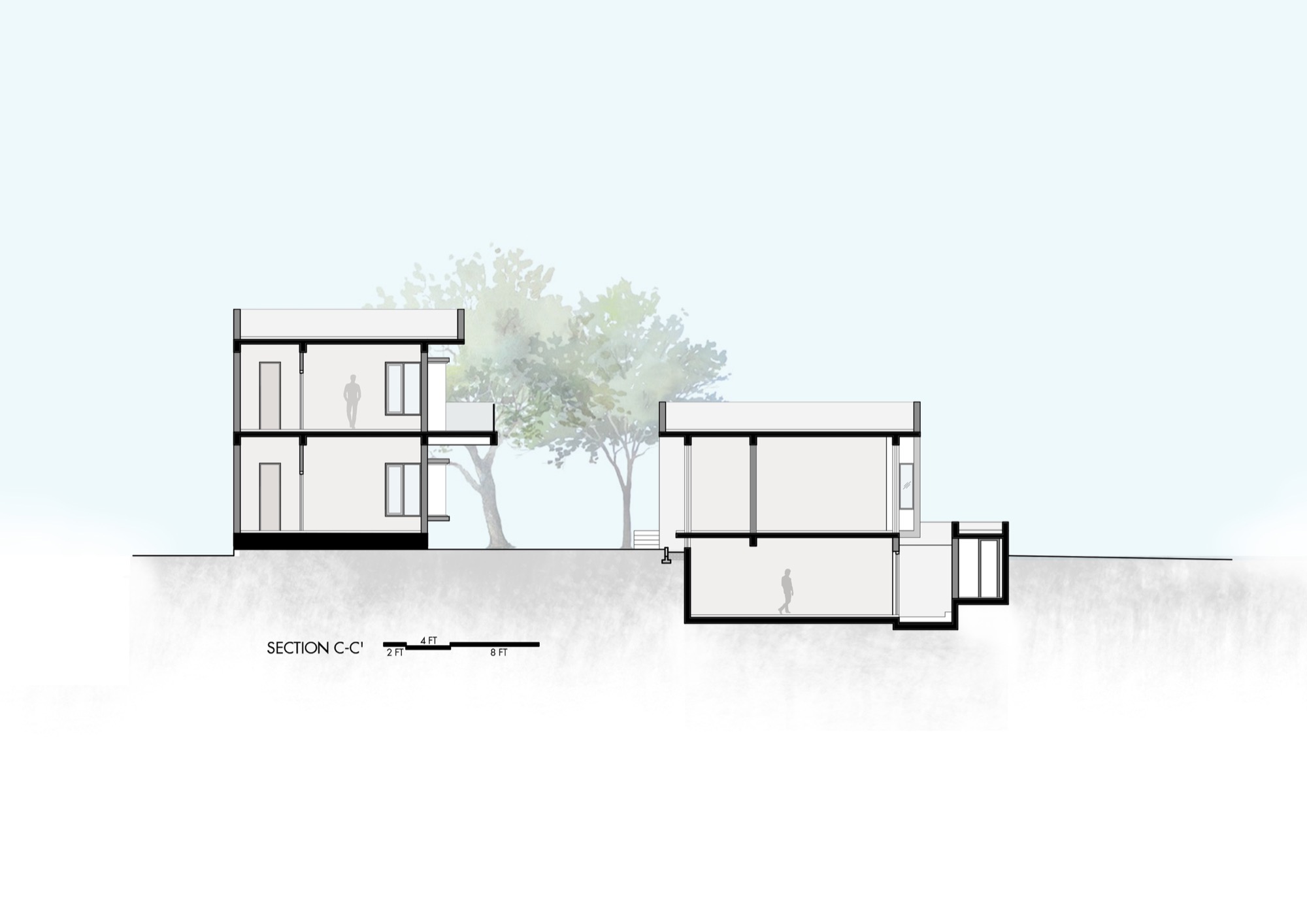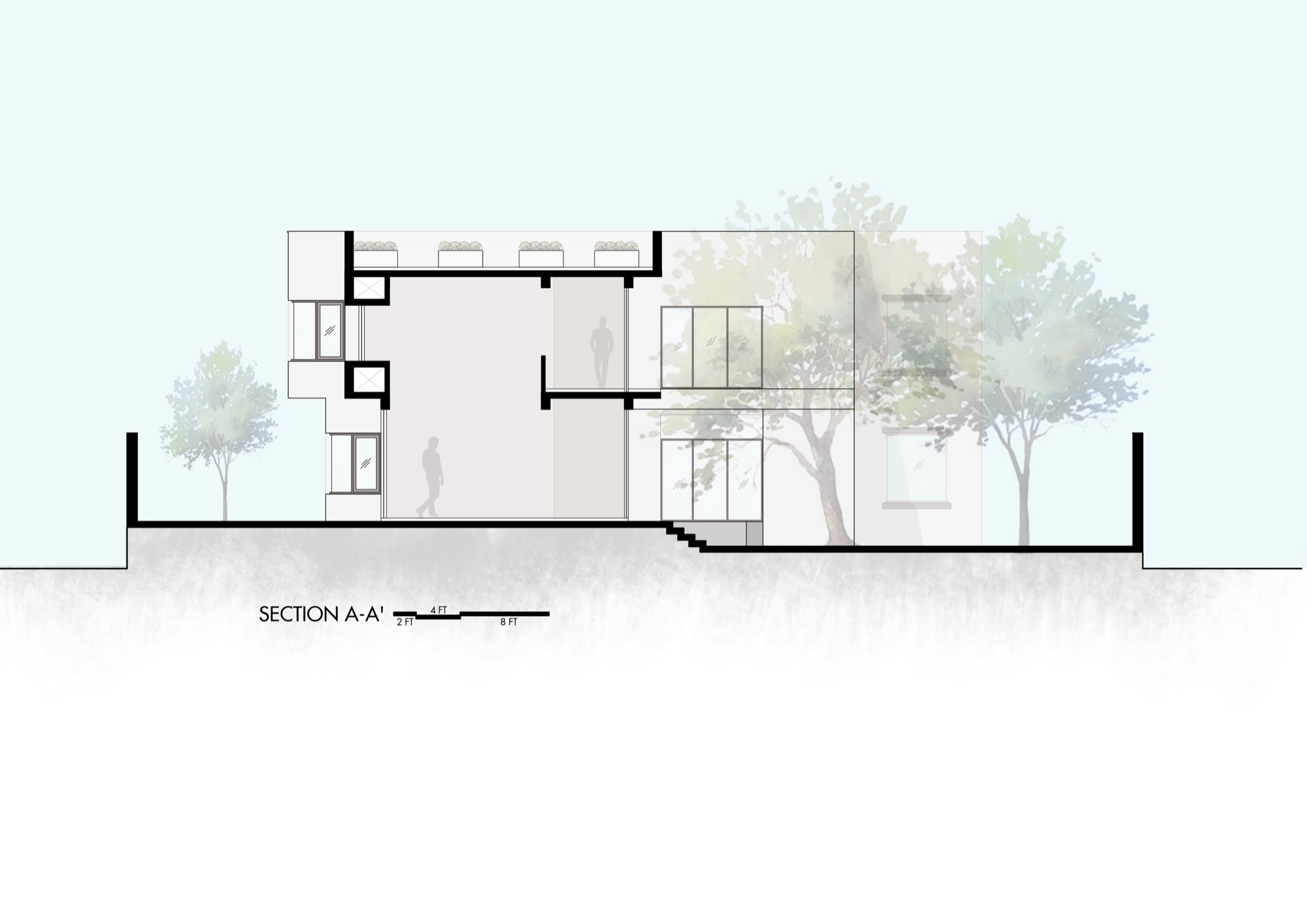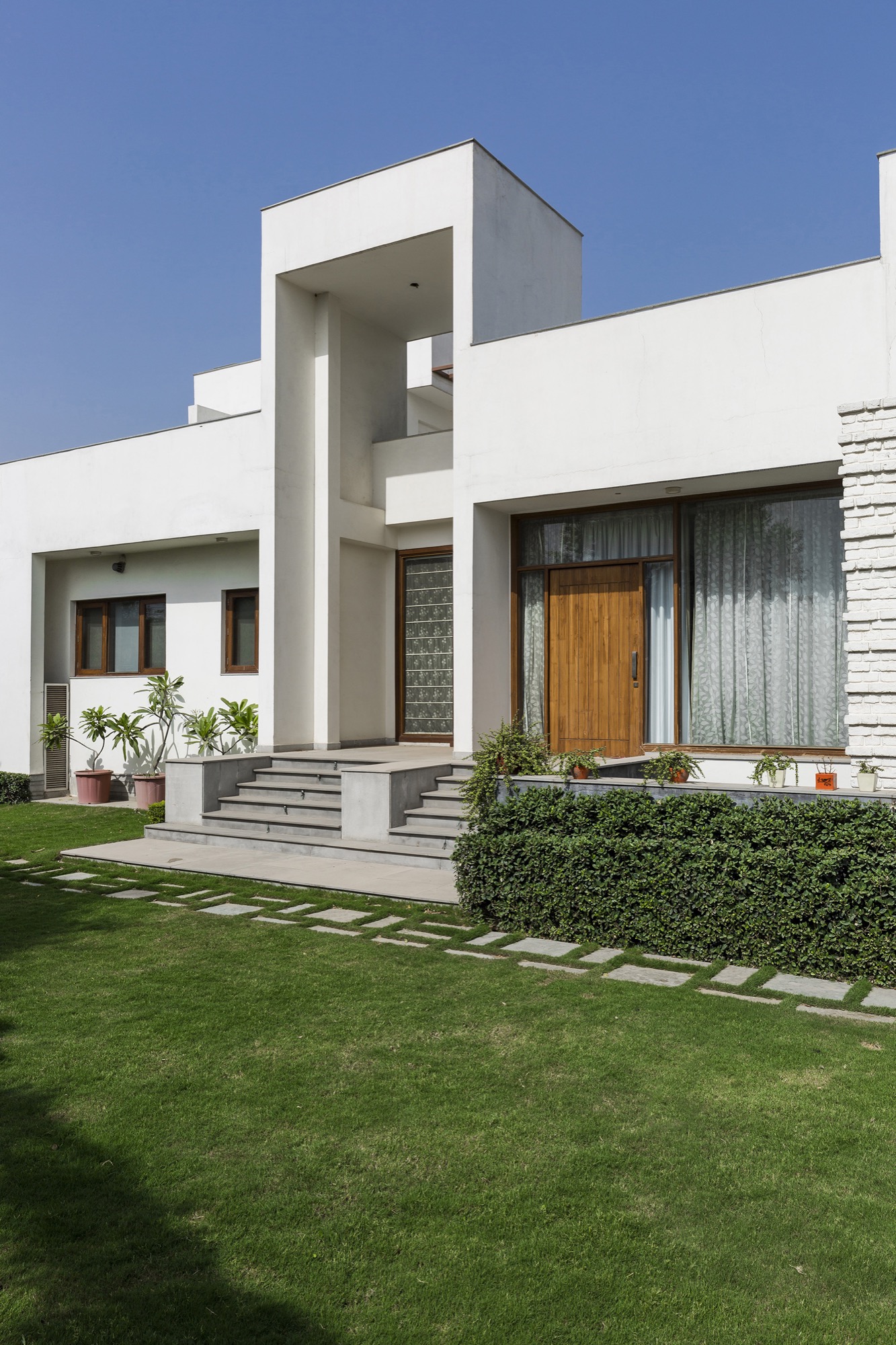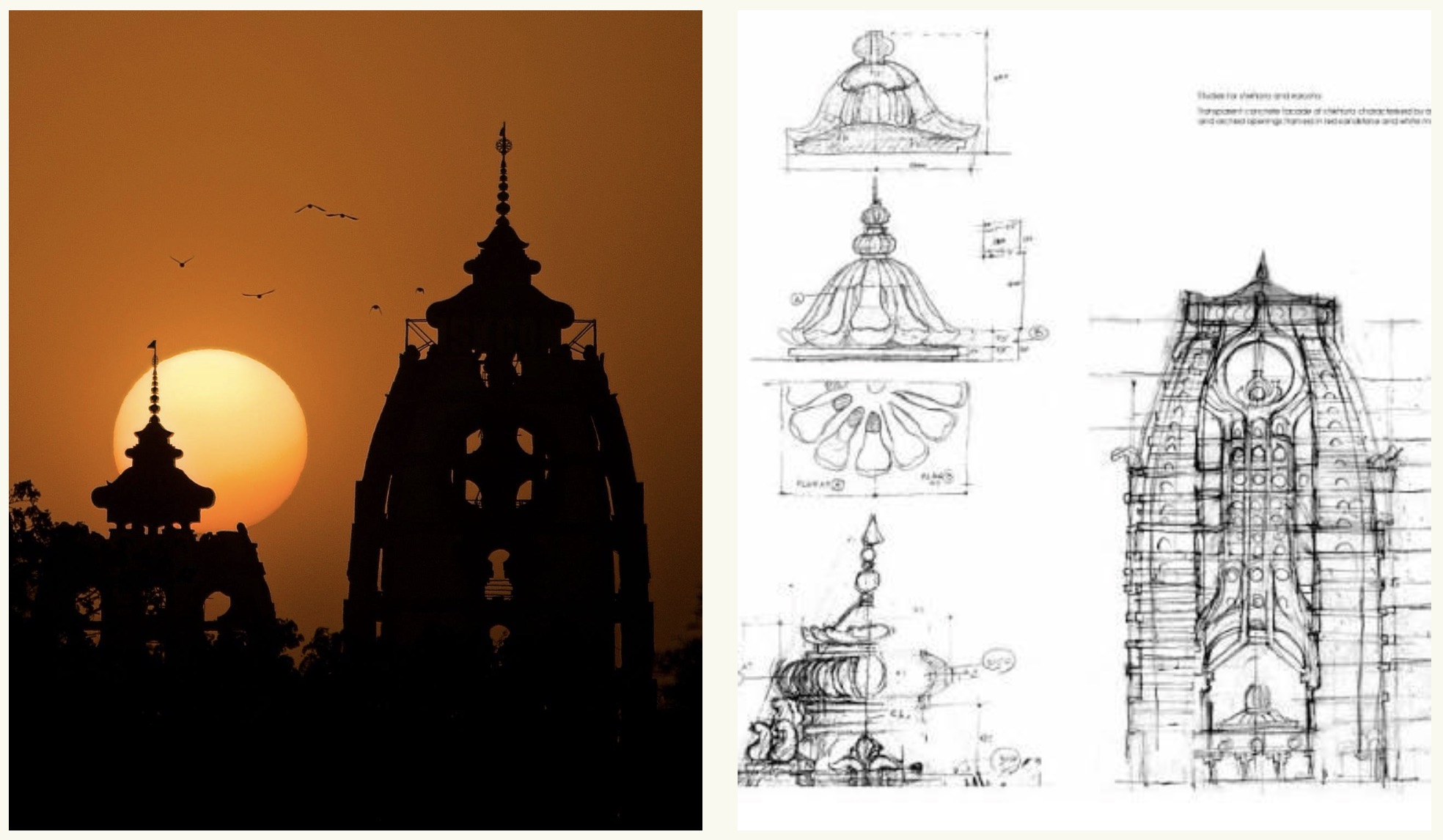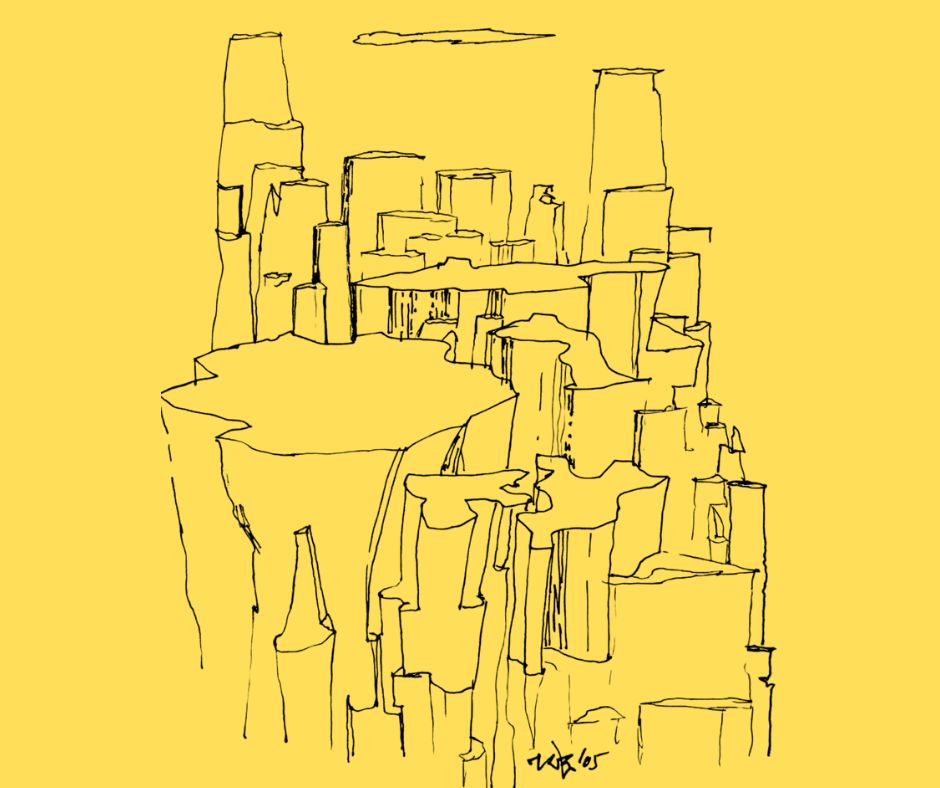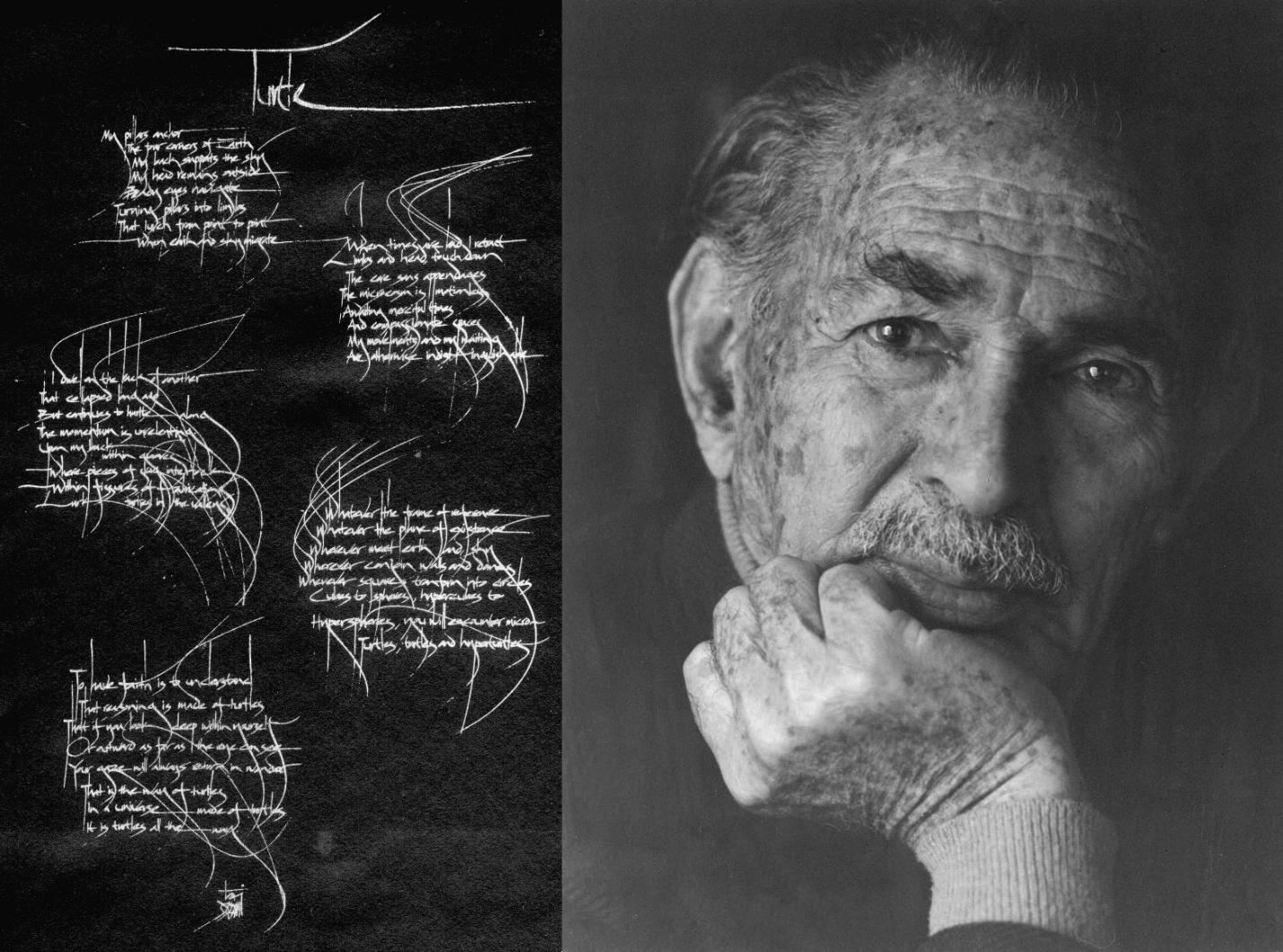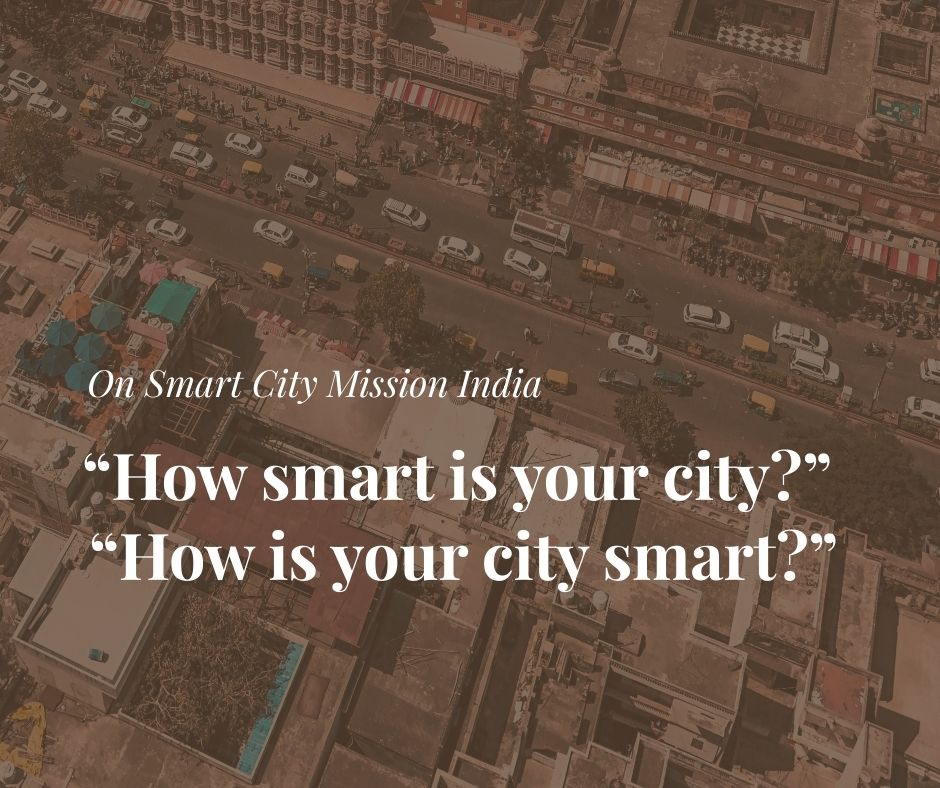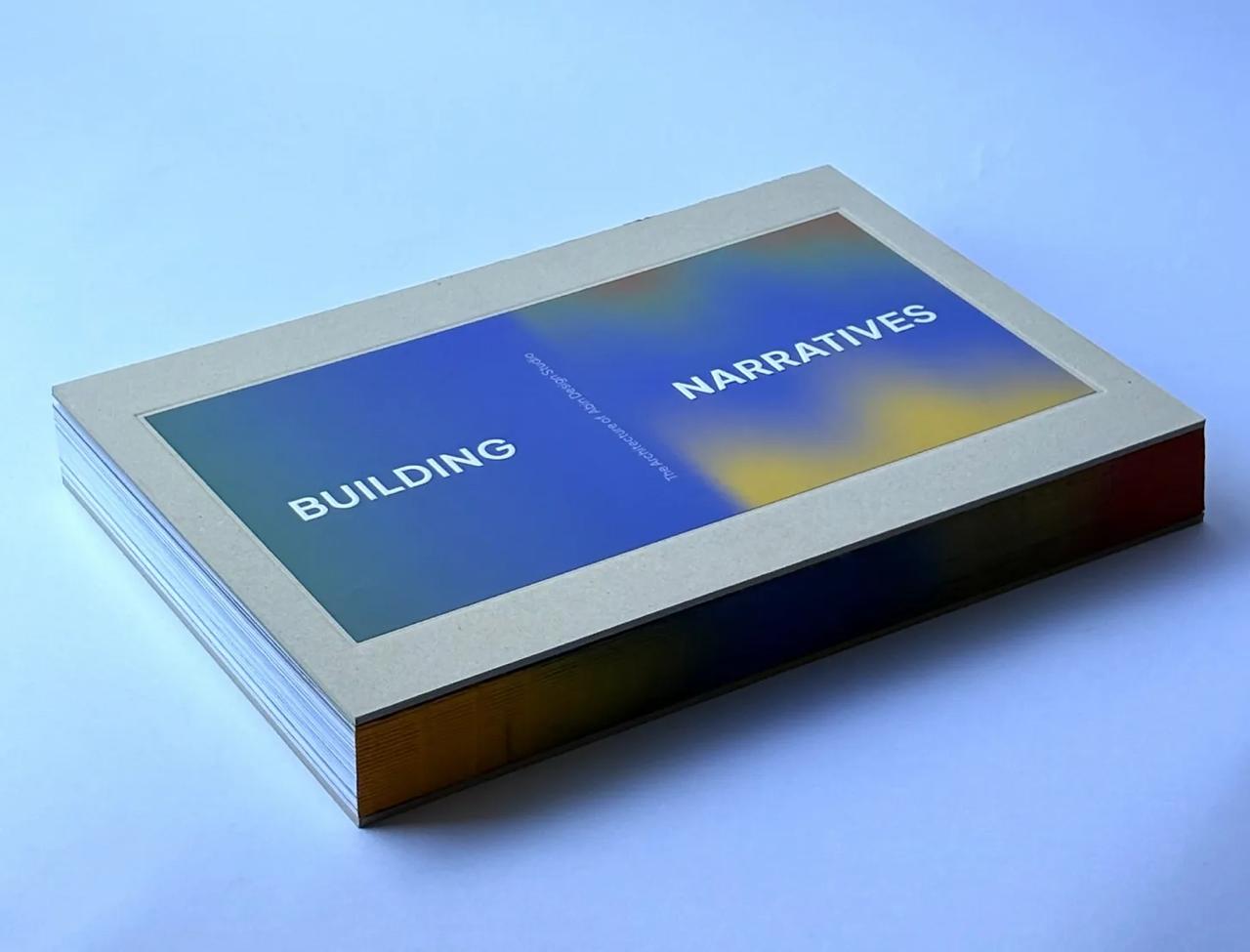The Earth when it was first seen from space was referred to as a Blue Green dot, this architectural project is about the Green bit in that speck. In this speck lies Delhi as a megalopolis which is under immense environmental stresses, currently the second most populous city in the world, it is projected that it could be the most populous city by 20281. That fact apart it still is one of the greenest cities in the world with more than 7% of it under forests and in 2018 the city saw major protests against the felling of more than 14,000 existing old trees for a large scale government housing project. This ‘proposed’ tree felling exercise was a result of the need to accommodate the thousands of cars in stilts & basements that the occupants of the multi storied housing would have needed. Slowly but steadily the tree cover on the ground floor of the city has died a slow death at the hands of developers, builders and also the bye laws of the city which mandate for stilted car parking even amongst plotted residential development. The car has been given the mandate and the authority to dictate design when it comes to city planning right down to the individual dwelling unit. Recently Delhi has been given the dubious distinction of being one of the most polluted cities in terms of air having very high Particulate matter concentration (PM 2.5 & PM 10) during winters.
This is and was the background context and conversation with which this house tried to engage with. The plot was a 1090 sqm. polygonal site at the southern edge of New Delhi with three existing trees One giant Neem (Indian Lilac) Tree & Two Pilkhan (White Fig) trees. These trees are native to the sub continent and hold a high spiritual and ecological relevance in the sub continent. The site was reached through a narrow 18’ approach road on the southern end and was open towards North and East. The East side had the Gram Panchayat undeveloped open lands (commonly owned village land) with a few trees. This plot size is somewhat unusual for New Delhi and somewhere between a plotted bungalow & a peripheral rural farmhouse.
The client came to us with the brief that they wanted to build an environmentally conscious green residence in a very short duration of 8-12 months for there family, guests and use it as an Airbnb in the near future. They aesthetically preferred it to be a simple and easily maintainable building with a strong preference for a building rendered in all white and minimal or no exterior cladding. It was built in two phases with the civil works, major interior works, interior lighting being done in the first stage in 2016 and the exterior lighting in the second stage in 2018.
Delhi is challenging city climatically having a composite climate with a harsh long summer and a short but intense winter season. The summer is followed by the monsoons which brings a much needed respite from the intense summer heat. The transition from autumn to winters is also very pleasant and the maximum outdoor events take place during that time. The brief prompted us to go back to a valuable lesson imparted during architecture school that a good solution for Delhi’s climate is a North Courtyard and a South Courtyard. The north being suitable for the long summers and the south for the short winters. A two storey U shaped layout was devised with the public areas in one arm (formal drawing/living area), the semi private areas (dining and family lounge) in the centre and the private bedrooms in the other arm. The ground floor had the mothers bedroom, daughters bedroom and guest bedroom and first floor had the sons bedroom, children bed and second guest bedroom. The U shape was placed nestled around the existing trees in the north summer courtyard and a southern side winter courtyard with a double height volume containing the informal family spaces & the vertical circulation sandwiched in between. The west shorter end was kept for the driveway and the main entrance with another entrance opposite to it on the eastern side, which was planned as a future pedestrian path and a way into the eastern garden. The South east corner also had the Mandir which was designed as a massing added onto the existing building and with a textured brick wall. The east has another sunken courtyard which would lead one into the basement proposed as a Den, home office and theatre. Both the entrance volumes were double height volumes to accentuate the entrances and delineate them. The western side of the house was further insulated from the harsh western sun with all the bathrooms and dressing areas planned in that end acting as a buffer zone. The first floor has a small private bathroom courtyard for the sons bedroom on the first floor. The first floor on the southern facade was cantilevered (extended outside) to shade the openings on the ground floor from the summer sun. The first floor also has deep windows on the south side which only allow the lower altitude winter sun to penetrate them. The house was made luxurious and voluminous, airy with floor to floor heights of 12’ and 11’ respectively.
The house is open to views both in the south and the north, east and closed on the west. One can walk from the south courtyard to north courtyard form within the house and completely open it up during events and preferable climatic conditions natural during the monsoons, autumn and sunny winter days. The sun during winters warms the public areas of the house and one can have food in the dining with the winter sun on the table. The house has the flexibility to adapt to weather conditions and accept and deny the both positive and negative aspects of extreme weather conditions.
We consciously decided not to go for a pure rating based approach for designing this house and making it sustainable. Although a computational solar shading, daylight, natural ventilation & renewable energy analysis was done for the project with IGBC green homes as the base system followed. To provide optimal envelop insulation AAC blocks were used for the walls, 1’ thick brick Bat Koba waterproofing on all roofs, a deep false ceiling and a green roof with organic vegetables being grown on the topmost roof. The highest electricity consumption in a house is usually of the air-conditioning this was further optimised by centrally air cooling the living, dining, kitchen and the Mothers and Sons bedroom. The client is currently in the process of installing a 12kw solar panel system on the roof. The grey-water from both the kitchen, main bathrooms, is filtered through a gravel and charcoal based system and collected in a tank for usage in the landscape. The same tank is also connected to the roof rainwater runoff. Although not a sound choice environmentally It was decided to restrict the construction methodology of the house to the more mainstream RCC framed structure with AAC block infill due to time, cost & technical considerations.
In terms of the materiality white paint render was used on the facade with interiors floors in Indian white marble with inserts of jaisalmer borders. In the exterior North courtyard we used rough Kotah Stone with jaisalmer, Indian white marble inserts. The windows were all made on site with locally sourced hardwood and polished. All the flooring material for the house was Indian, being sourced from a 300 km radius form New Delhi. Stone wastage was used by stylizing it in contemporary ways in the skirting, indoor and outdoor flooring patterns, borders based on traditional motifs such as Barfi (Chevron).
As a concluding note contemporary architecture as a discipline excels in fetishizing and objectifying everything within its purview which includes materials, aesthetic flourishes and even the landscape. The courtyard rarely exists now in most urban dwellings and where it does exist it is a stylized space with an ornamental tree with the background of artificial plastic artificial grass. Trees are worshipped, revered as deities and hold a major spiritual significance in the culture and the religions of the subcontinent. The trees in this house grow taller than the house itself in the grand courtyard and during our last visit the client told us that 10-14 species of birds have been spotted in the house and he is currently documenting and photographing them. The house offers a new kind of inclusive design which hints subtly at an inclusivity for other species as well. It suggests that what if design attempted to preserve the ecological even in Urban areas and used that as an aesthetic strategy. In this age of environmental extremities what if it was mandatory to plant an ecologically relevant tree species next to every new plotted residence in New Delhi?
The result of this design process was a house which the clients on there own lovingly named Neemangan – A Patio for the Neem tree.
Project Facts:
Completion Year: 2016
Gross Built Area: 679 sqm.
Project location: New Delhi
Lead Architects: Ameet Singh
Design Team: Shilpy Mehta, Kanika Buddhiraja, Dhruv Agarwal, Deepak Dhanda
Clients:
Engineering: Acecon
Landscape: Ladybug Landscape Design
Consultants: Shikha Sharma (VSK) – Energy Efficiency, Param Electrical Consultants, PDS consultants



